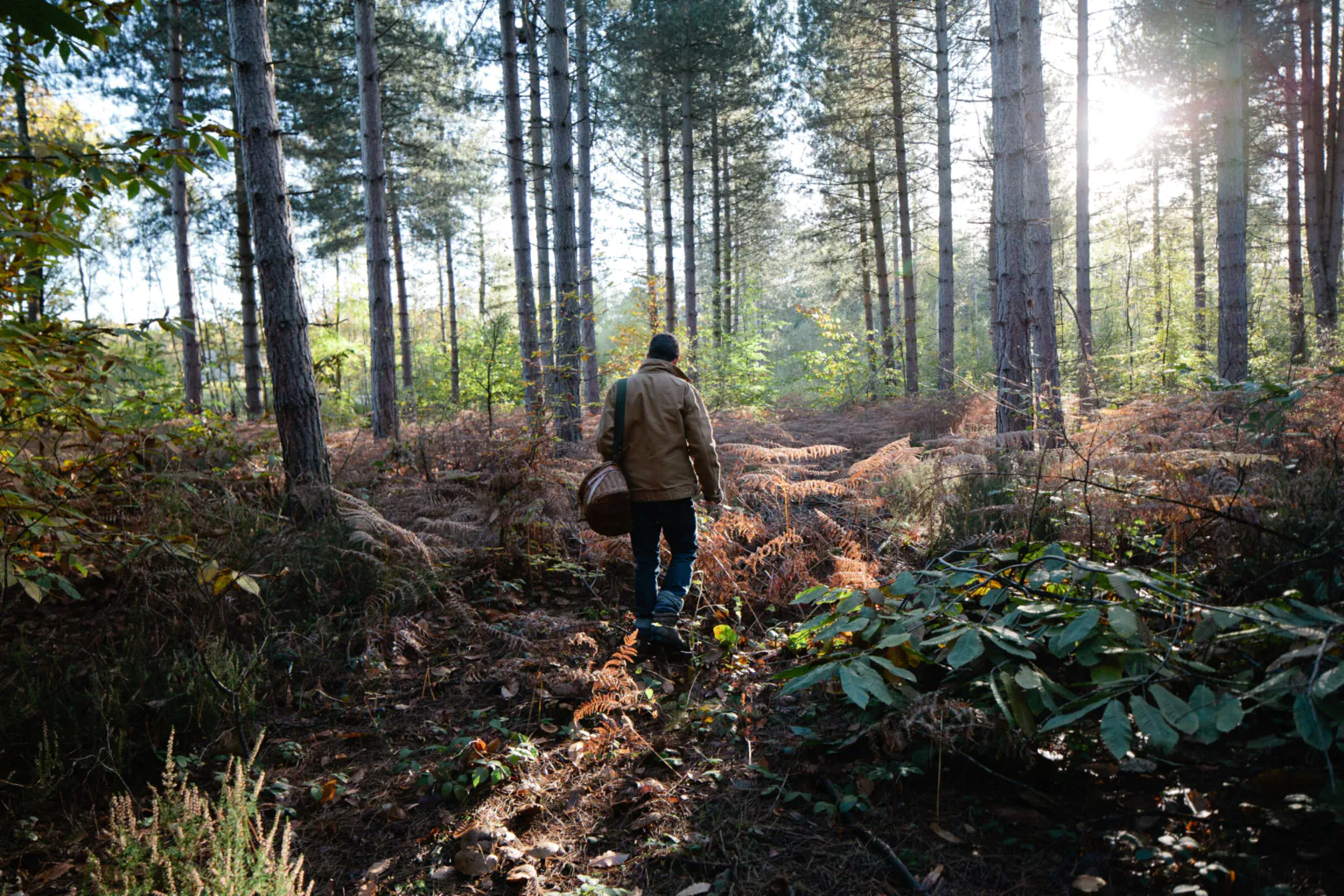No, the modern forager is not a beggar or a starving man – he is a naturalist, an explorer, an educator. He’s also a culinarian and a gourmet. He knows a thing or two about pesto made from wild ramson, and he’s not a fool to taste the freshest sea urchins on the beach. What about magnolia blossom pickles?
In Russia, foraging is more considered a hobby for urban lunatics: elderly people exchanging recipes for nettle and snowdrop soup in Odnoklassniki, and fanatical old-school mushroom hunters in storm jackets. In the UK, this is not the case – the largest forager communities in social networks have several hundred thousand members. British foragers have a great understanding of botany and are happy to advise beginners. “Hi, this grew in my backyard. Can you tell me if it’s edible?”, “Yes, it’s wild fennel. Dry the inflorescences and add them to meat and fish dishes.” Sometimes it seems that guests come to show off a photo of a random weed, just to marvel at the extensive knowledge of the regulars.
So what do the foragers of the British Isles collect and prepare?

Almost anything that grew on its own: mushrooms, berries, nuts, seeds, tubers, wild vegetables and fruits, spicy herbs, medicinal plants. Right after Christmas, they start leisurely selecting recipes for marinade for magnolia blossoms, drinking chamomile tea prepared last year, in early spring they make salads from forest cherry and wild rucola, in May they pick morels. In summer, the rebellious spirit takes over the forager: chanterelles are replaced by porcini mushrooms, acacia flowers by nettle seeds, crisp first greens and spicy herbs by wild root crops and fruits; hazelnuts ripen, blackberries and elderberries follow strawberries.
Forager rides, cuts, dries, boils, bakes, cans, for he must be sure to have time to enjoy the seasonal flavors and stock up. By mid-autumn, having finished with blueberries, rose hips and chestnuts, a satisfied Forager wraps himself in a blanket and starts tasting his preparations, only rarely going to the forest for late mushrooms – winter opiates or, say, Judas’ ear. The Christmas vacation is over, and Forager, sipping his own linden tea, starts studying recipes for violet chocolate…
Foraging and seafood

But “wild food” can be obtained not only in the forest. Inhabitants of coastal regions specialize in foraging for seafood – shellfish, seaweed and coastal plants. Crabs and sea urchins can also become forager’s prey.
The most famous shellfish of the British coastline are oysters, mussels and cockles. To harvest and eat them safely requires knowledge and experience – they are often contaminated with infections and require careful sorting and preparation before they can be eaten. Algae, on the other hand, is an ideal foraging product for beginners: most of them are edible, but not all of them have gastronomic value. Algae are most often eaten fresh or dried and used as a condiment. The most popular are dulse, ulva (sea lettuce) and kelp (kelp). And carrageen seaweed (Irish moss) is traditionally used as a thickener in hot dishes.
Among the coastal plants Foragers are particularly fond of are samphire (sea asparagus), which grows on salt marshes, and sea buckthorn, better known as… buckthorn. Its natural habitat is the sand dunes of the east coast of England, so it too is somewhat of a ‘gift of the sea’.
What do foragers do this for?

To unite with nature and reduce stress levels. For some people, going on a vacation to the nature means “shashlykchik under the brandy”, for others it means wandering with a basket and listening to birds singing or the sound of the surf.
Cooking traditional dishes from seasonal local products supports cultural traditions and the transmission of knowledge of their family, their people and their region to future generations: “My grandmother used to make elderberry compote like this, now I make it, and my children will make it after me”. And, of course, foraging promises gastronomic pleasures. Eating nature’s gifts brings variety to the diet, saves the budget and brings health benefits due to their high content of vitamins and microelements.
Forager gratefully accepts the gifts, realizing that he is a small part of the big world. And the opportunity to harvest his own “wild food” nurtures responsibility, respect and love for its source – nature.
The ethics of foraging

The Forager’s Code states: “Don’t collect more than you plan to use, and don’t take everything you find. Remember that everything in nature is interconnected, and do not disturb this delicate balance. Don’t reveal exact locations when consulting or bragging about your loot on the Internet – it’s easy to imagine the damage that could be done by the neighborhood residents arriving at the mushroom meadow at the same time.”
Foragers honor laws and respect private property. Collecting is completely prohibited in some areas, some areas are restricted during the nesting season, and some require permission from the landowner. It is also illegal to collect specially protected rare plants.
To ensure that foraging is both rewarding and enjoyable, it is important to observe safety precautions. Experienced foragers strongly discourage collecting and tasting unfamiliar plants. If species identity is in doubt, it is better to first take quality photos and consult with community experts. Some plants are very dangerous. For example, saffron omiege contains a strong neurotoxin and is one of the UK’s most poisonous plants. The problem is that it can easily be confused with other members of the umbrella family – edible, tasty and therefore extremely popular with collectors. Plants such as aconite and borschtail can cause damage to health even if they come into contact with the skin. Experts also advise against relying entirely on plant identification apps.
If you’re not ready for full immersion

If foraging on your own raises some concerns, you can join foraging excursions organized by experienced experts in different regions of the UK. They will tell and show you what, where and how to collect, followed by cooking and eating the spoils together. There are also workshops on gathering natural materials for traditional crafts, such as weaving fishing nets or making baskets.
Gastronomic interest in the gifts of nature can be satisfied in the city markets. Usually the seller is himself an experienced forager and will be happy to advise on what to choose and how best to prepare it. British farmers cultivate and sell ramsons, watercress and other wild species. You can buy fresh seaweed at the fish market, and chain supermarkets offer dried seaweed, including locally sourced, year-round. For those who don’t want to cook, there are nomadic dinners outdoors, where you’ll first hear some entertaining stories about foraging and then be offered a set menu of themed dishes. Finally, many trendy restaurants in the UK are promoting the use of nature’s gifts in haute cuisine and introducing them into seasonal menus. But there will always be someone more interested in following their ancient instincts and sourcing their own ‘wild food’.
